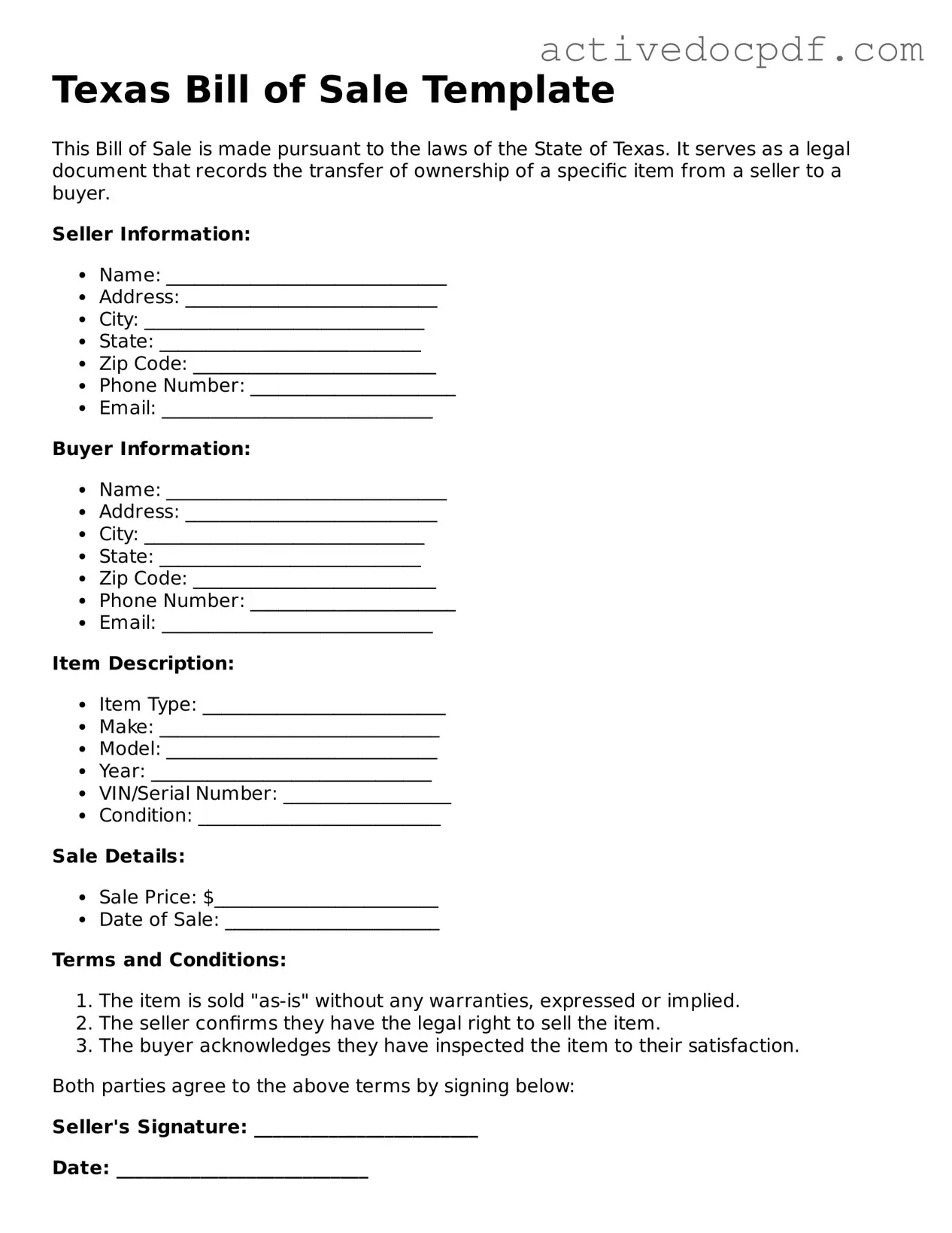A Texas Bill of Sale form is a legal document that serves as proof of the transfer of ownership of personal property from one party to another. This form is commonly used for the sale of vehicles, boats, trailers, and other personal items. It outlines essential details about the transaction, including the names of the buyer and seller, a description of the item being sold, and the sale price.
When do I need a Bill of Sale in Texas?
While a Bill of Sale is not always legally required in Texas, it is highly recommended in several situations, including:
-
When selling or buying a vehicle.
-
For transactions involving boats or trailers.
-
When dealing with high-value personal items, such as jewelry or electronics.
-
To protect both parties by providing a record of the transaction.
A comprehensive Texas Bill of Sale should include the following details:
-
The full names and addresses of both the buyer and seller.
-
A detailed description of the item being sold, including make, model, year, and VIN (for vehicles).
-
The sale price of the item.
-
The date of the transaction.
-
Signatures of both parties to confirm the agreement.
Is a Bill of Sale required for vehicle registration in Texas?
Yes, if you are purchasing a vehicle in Texas, you will need a Bill of Sale to register the vehicle with the Texas Department of Motor Vehicles (DMV). This document helps establish proof of ownership and is often required alongside other paperwork, such as the title and proof of insurance.
Can I create my own Bill of Sale in Texas?
Absolutely. You can create your own Bill of Sale in Texas, as long as it includes all necessary information and is signed by both parties. There are also templates available online that can help guide you in drafting a legally sound document. Just ensure that it meets the requirements outlined by Texas law.
Do I need to have the Bill of Sale notarized?
In Texas, notarization of a Bill of Sale is not required for most transactions. However, having the document notarized can provide an extra layer of protection and legitimacy, especially for high-value items. It may also be beneficial if a dispute arises in the future.
What should I do with the Bill of Sale after the transaction?
After completing the transaction, both the buyer and seller should keep a copy of the Bill of Sale for their records. This document serves as proof of the sale and can be important for tax purposes or in case of future disputes. Additionally, if the item is a vehicle, the buyer should submit the Bill of Sale to the DMV when registering the vehicle.
